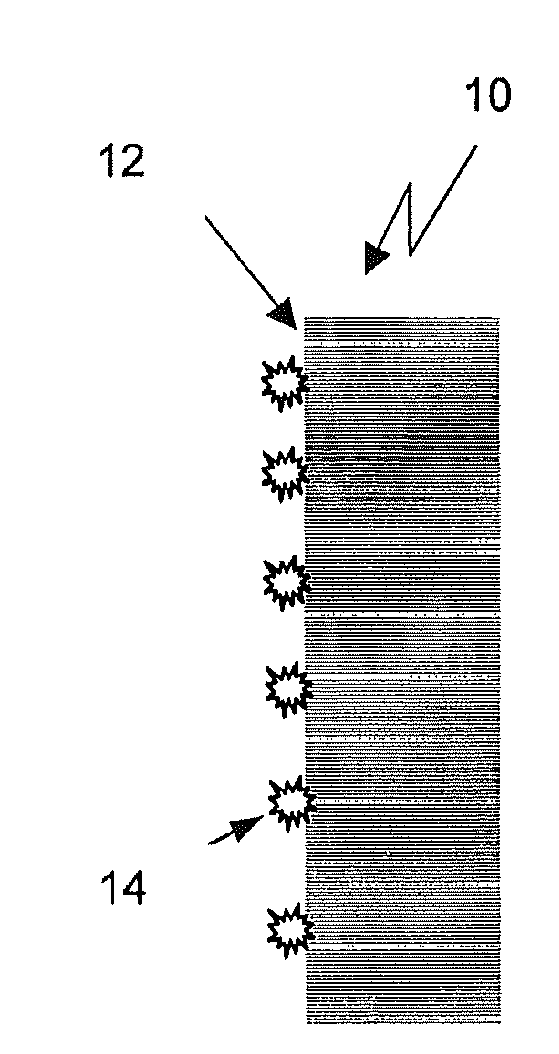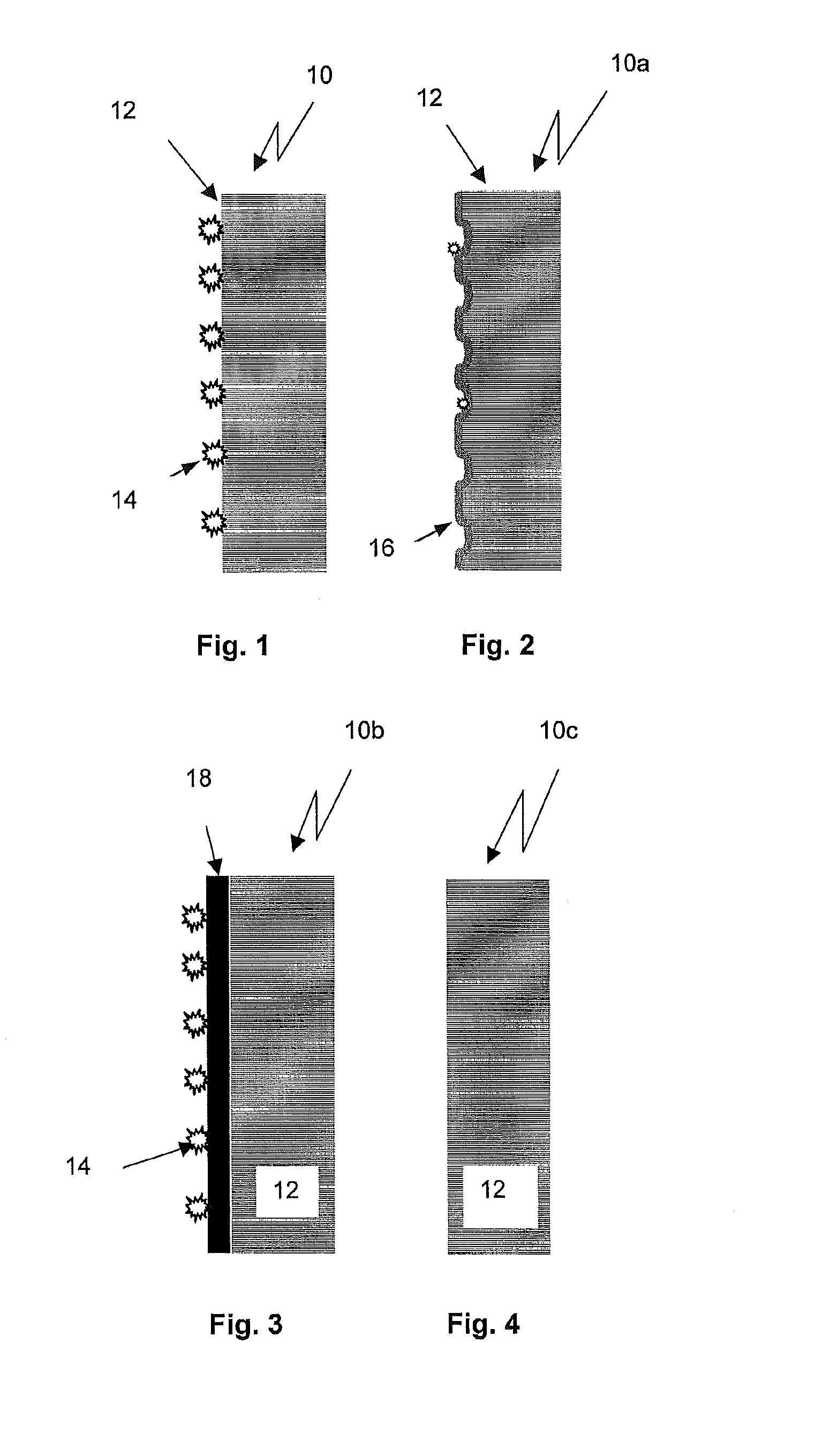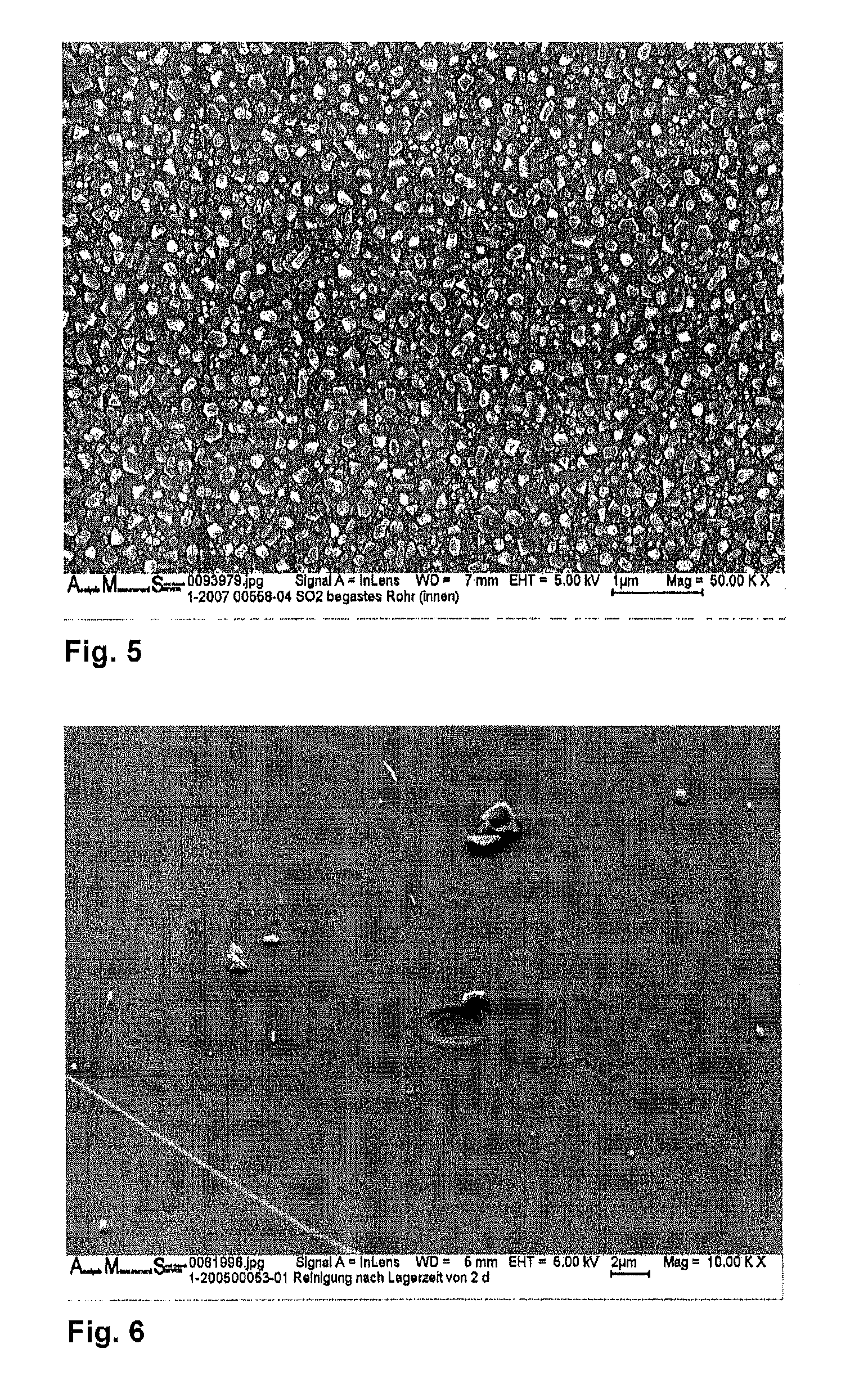Method for the production of pharmaceutical packaging
a packaging and pharmaceutical technology, applied in the direction of glass making apparatus, glass shaping apparatus, coatings, etc., can solve the problems of not being able to meet all demands, not being able to afford economical mass production, and being difficult to achieve the effect of mass production,
- Summary
- Abstract
- Description
- Claims
- Application Information
AI Technical Summary
Benefits of technology
Problems solved by technology
Method used
Image
Examples
example 1
[0057]The inner surface of glass tubes made from borosilicate glass (type Fiolax®, produced and marketed by Schott AG, Mainz) was subjected to a gassing operation using a gas mixture composed of 50% SO2 and 50% air, where the mixture had a water content of 40 g / m3. The SO2 gas treatment was carried out for 600 seconds. The tube sections so treated were formed into vials of a desired dimension at a temperature of approximately 1200° C., using a forming machine. The inner surfaces, with and without SO2 gas treatment, were examined by scanning electron microscopy (SEM). Following the forming process the glass tubes were rinsed for 10 minutes at 60° C. using de-ionized water. Finally, sodium leaching of the conventional glass tubes, and the glass tubes according to the invention was tested by autoclaving (60 minutes at 121° C. with de-ionized water).
[0058]The “gas treated” tube surfaces show (before the forming operation) a dense coat of crystals, as can be seen in the SEM plot of FIG. ...
example 2
[0062]The inner surface of glass tubes made from borosilicate glass (Type Fiolax®, produced and marketed by Applicant) was treated using a propane gas flame, either (a) stationarily for a defined time or (b) continuously at a constant speed. Thereafter, corresponding glass tubes were produced from the tube sections so conditioned using a hot-forming machine.
[0063]FIG. 9 shows an SEM plot of the inner surface of a glass tube after conditioning using a propane gas flame (before rinsing).
[0064]FIG. 10 shows, by way of comparison, an SEM plot of the inner surface of a conventional glass tube with coarse surface defects.
[0065]FIG. 11 shows the sodium leaching values after the autoclaving operating according to FIG. 1, comparing vials formed from conventional glass tubes (“Standard”) and vials produced in the way proposed by the invention, including conditioning using a propane gas flame prior to hot-forming (“Invention”).
[0066]The sodium leaching value is lower by approximately 20% in av...
PUM
| Property | Measurement | Unit |
|---|---|---|
| temperature | aaaaa | aaaaa |
| temperature | aaaaa | aaaaa |
| temperature | aaaaa | aaaaa |
Abstract
Description
Claims
Application Information
 Login to View More
Login to View More - R&D
- Intellectual Property
- Life Sciences
- Materials
- Tech Scout
- Unparalleled Data Quality
- Higher Quality Content
- 60% Fewer Hallucinations
Browse by: Latest US Patents, China's latest patents, Technical Efficacy Thesaurus, Application Domain, Technology Topic, Popular Technical Reports.
© 2025 PatSnap. All rights reserved.Legal|Privacy policy|Modern Slavery Act Transparency Statement|Sitemap|About US| Contact US: help@patsnap.com



